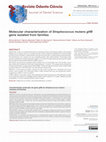Papers by Ahmed Olayan R Alharbi

American Journal of Respiratory and Critical Care Medicine, 2004
Vitamin D receptor (VDR) polymorphisms have been associated with several immune-related diseases,... more Vitamin D receptor (VDR) polymorphisms have been associated with several immune-related diseases, and VDR and vitamin D itself modulate T cell differentiation. VDR maps to chromosome 12q, near a region commonly linked to asthma. We evaluated VDR as part of a 12q positional candidate survey, and in response to observations of VDR polymorphism associations with asthma and atopy in a founder population of Quebec. Twenty-eight loci in 7 positional candidates (7 in VDR) were genotyped in 582 families. Whereas other candidates demonstrated no association, the VDR ApaI polymorphism demonstrated significant transmission distortion, with undertransmission of the C allele in a ratio of 4:5 (p ϭ 0.01). This association was most prominent in girls, in whom distortion was more marked (p ϭ 0.009). Sex-specific associations between multiple VDR polymorphisms and immunoglobulin E levels were also observed (p ϭ 0.006-0.01). Asthma associations were replicated in a second cohort (517 females with asthma and 519 matched control subjects): 4 of 6 VDR variants demonstrated significant association (p ϭ 0.02-0.04). The direction of association in this second cohort was opposite to the effects seen in the trios, but similar to findings in the Quebec study. These results suggest that VDR influences asthma and allergy susceptibility in a complex manner.

Aquaculture, 2011
OBJECTIVE: Caries is a multifactorial infectious disease and the main etiological agent is the ba... more OBJECTIVE: Caries is a multifactorial infectious disease and the main etiological agent is the bacteria Streptococcus mutans due to its virulence factors, which enable the adherence to dental enamel and favours the formation of dental biofilm through the production of extracellular polysaccharides. The transmission of S. mutans can occur between people, often within families. The present study aimed to evaluate the intrafamily genetic pattern of S. mutans through partial sequencing of the gene that encodes the glucosyltransferase β (gtfB) enzyme. METHODS: We previously analyzed saliva samples from 40 individuals from nine families, and it was obtained 64 isolates biochemically characterized as S. mutans. The isolates were evaluated by random amplification of polymorphic DNA (RAPD). Those with greater similarity were characterized by partial sequence 16S rRNA gene and the gtfB gene sequencing. RESULTS: It was observed genetic similarity among strains isolated from individuals with caries activity; while isolates from individual without caries showed that they are genetically distinct, suggesting a different virulence pattern. CONCLUSION: The present results demonstrated that partial sequencing of the gtfB gene showed to be a potential marker to investigate genetic pattern and virulence of S. mutans, deserving further investigation in order to identify families at risk of caries.

Uploads
Papers by Ahmed Olayan R Alharbi